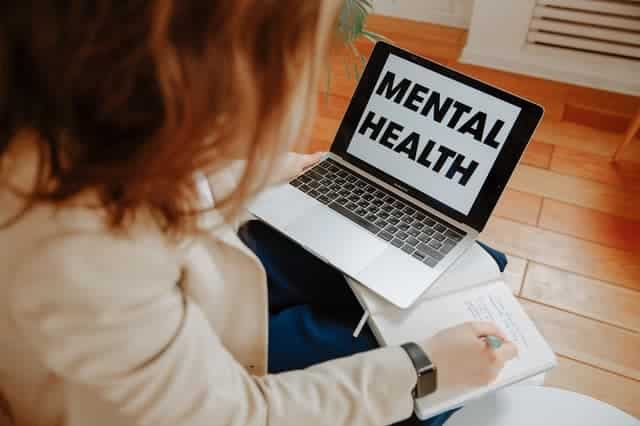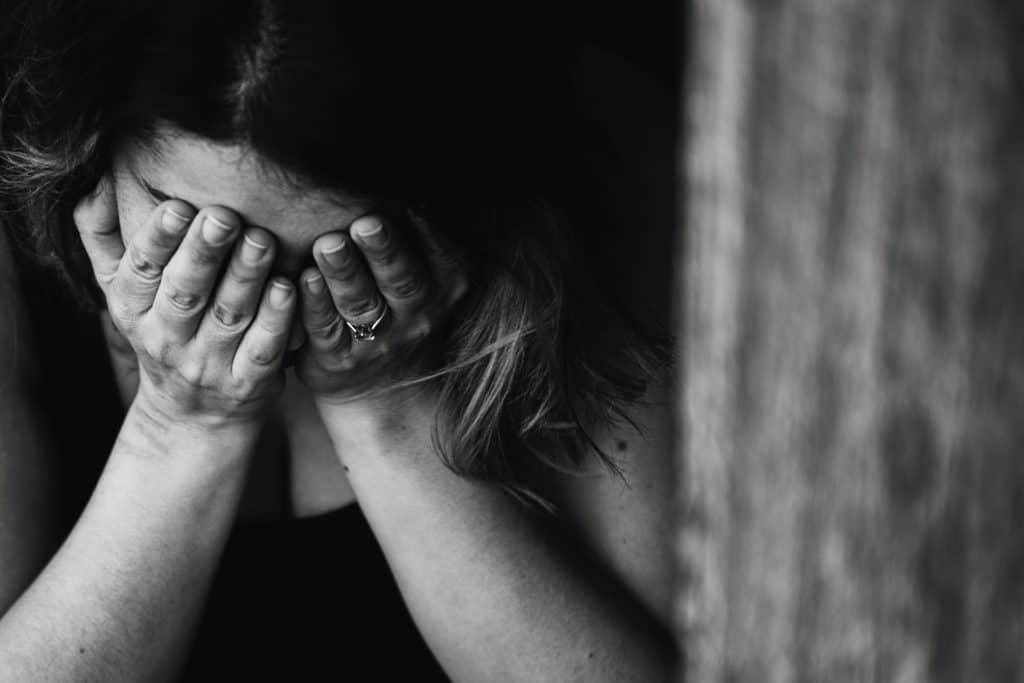The state of Idaho has struggled with rising rates of mental health problems, eg. clinical depression and a range of anxiety disorders, to name but a few, among its residents for many, many years, and, sadly, with the ongoing social and economic impact of the coronavirus, there does not appear to be any light at the end of the proverbial tunnel – just more and more Idahoans, particularly from the younger generation, finding their individual daily existence is becoming, more and more, a real daily battle.
In fact, according to a recent updated study from the National Alliance on Mental Illness (NAMI), nearly a quarter of Idahoans are now living with a mental illness, often described as the “invisible illness,” a rate significantly higher per capita than the U.S.’s national average.
Additionally, according to the non-profit Mental Health America’s 2019 State of Mental Health in America report, there are:
- Over 44 million American adults (18.07%) with a mental health condition
- 12.2% (5.3 million) adults with a mental illness and no health insurance, and
- 56.4% of adults (that’s over 24 million) with a mental illness that have received no treatment whatsoever
Note: You can access the latest statistical data on the status of mental health in Idaho at the Idaho Department of Health & Welfare: Public Dashboard for June, 2020.
The clear and existing need for a range of professional mental health treatments to assist this huge number of affected people, certainly in the area of more flexible outpatient programs that can fit the more rigid schedule of a working professional or a mother of children whose school is temporarily shut, is there, it needs to be addressed now, and it has never been more obvious.
However, many state health budgets (this year’s, and certainly next year’s) have been redirected straight toward the pandemic, and, once again, mental illness has no choice but to take any available seat at the back of the room, and quietly wait its turn.
So, which are the most common mental health disorders affecting the U.S., and, more particularly, the state of Idaho? According to the NAMI, in order of prevalence, they are:
- Anxiety Disorders – 19%
- Depression – 7%
- Dual Diagnosis (Any mental health disorder and a substance use disorder (SUD)) – 4%
- Post-Traumatic Stress Disorder (PTSD) – 4%
- Bipolar Disorder – 3%
The Invisible Impact of COVID-19
Before we look at each of these mental health disorders in turn, it is pertinent to turn our attention back to the continuing damage being done by the coronavirus pandemic. Currently, as of the beginning of November, 2020, fatalities across the U.S. are high, and getting higher – over 1,000 people per day are dying of the physical effects of COVID-19.
However, there are the invisible mental effects, too. Losing employment, being furloughed, unable to meet rent or mortgage payments and other socio-economic factors all mean rising rates of depression, anxiety, and a general fear for the future.
Using data collected through the ongoing Household Pulse Survey by the Centers for Disease Control & Prevention (CDC), many Americans are now struggling with mental health challenges; for example, more than 30% of adults have reported symptoms of anxiety or depressive disorder during the pandemic.
Furthermore, according to a mid-July, 2020 tracking poll carried out by KFF (Kaiser Family Foundation), a non-profit organization focusing on national health issues:
- 53% of U.S. adults reported that their mental health has been negatively impacted due to stress over the pandemic – significantly higher than the 32% reported in March of this year.
- Many adults are also reporting specific negative impacts on their mental health and wellbeing, such as:
- Difficulty sleeping: 36%
- Increases in alcohol consumption or substance use: 12%, and
- Worsening chronic conditions: 12%
All of this data, and the data that continues to be collected by these types of organizations, suggest that the situation will get far worse before it can actually begin to get better, both across the nation as a whole, and, specifically, here in Idaho.
Let’s return to the most common mental health disorders continuing to affect the state of Idaho:
1. Anxiety Disorders
Anxiety, when used as a generic term to cover its complete range of various disorders, is, by far, the most common mental health issue affecting the entire nation, including here in Idaho, too. Anxiety disorders, with the most common anxiety disorder being generalized anxiety disorder (GAD), are typically characterized by the following signs and symptoms:
- Excessive worry
- Fatigue
- Irrational fears
- Sleeping problems
- Strong self-consciousness
- Panic attacks, and more
If left untreated, anxiety disorders can result in physical symptoms, and can even cause life-threatening medical conditions, such as high blood pressure. The most common anxiety disorders are:
- Generalized Anxiety Disorder: As with all mental health disorders, generalized anxiety disorder (GAD) can have a serious impact on the life of the sufferer, affecting their personal health, work, social interactions, and other daily life circumstances. Those with GAD display excessive anxiety or worry, resulting in high levels of both continuing fear and anxiety.
-
- >Social Anxiety Disorder (previously known as Social Phobia): Those with social anxiety disorder have a general intense fear of, or are highly anxious about, “social or performance situations.” They worry that the actions or behaviors associated with their anxiety will be viewed negatively by others, leading them to feeling embarrassed.
- Panic Disorder: People with panic disorder have recurrent and unexpected panic attacks. Panic attacks are sudden periods of intense, debilitating fear that occur rapidly, and reach their peak within minutes. Attacks can occur unexpectedly or can be brought on by a specific trigger, such as a feared object or situation.
- Other anxiety disorders include phobia-related disorders, specific phobias, eg. the fear of flying or spiders, agoraphobia, separation anxiety disorder, and selective mutism.
Anxiety disorders can be successfully treated with psychotherapy, medication, or a combination of both.
2. Depression
Like anxiety, depression, a mental health disorder characterised by a persistently depressed mood, affects millions of U.S. citizens, both young and old, every year. Depression is a serious condition that can lead to suicide ideation (thoughts of suicide), and suicide attempts. It will certainly result in living a miserable life, if the symptoms persist and the disorder is left untreated. Those suffering with a depressive disorder display symptoms that can include:
- Persistent feelings of sorrow
- Low self-esteem, even worthlessness, as well as
- Weight gain or loss and
- Fatigue
The different types of depression, or depressive disorder, include:
- Major Depressive Disorder (also known as Clinical Depression): Major depressive disorder is the persistent feeling of intense sadness, or the loss of interest in normal activities, usually continuing for over a period of 2 years. In addition to the symptoms listed above, the sufferers of major depressive disorder can also display:
-
-
- Feelings of hopelessness
- Anxiety
- Muscular pain or discomfort
- High level of irritability
- Poor cognition
- Suicidal ideation or suicide attempts
-
- Seasonal Affective Disorder (SAD): With seasonal affective disorder, the sufferer becomes severely depressed, but only during the winter months.
- Psychotic Depression: This disorder can occur when someone who is clinically depressed begins to experience hallucinations, paranoia, and delusions as an integral part of their symptoms.
- Depressive Disorders affecting Women: Women are more susceptible because they can develop depression in ways unique to their sex, such as:
- Postpartum Depression: Usually occurring after the birth of a baby (though sometimes during the pregnancy itself), and
- Premenstrual Dysphoric Disorder: A form of depression directly linked to a woman’s menstrual cycle
3. Dual Diagnosis (also known as Co-Occurring Disorder)
Substance addiction (medically known as substance use disorder or SUD, for short), when accompanied by another mental health disorder, such as depression or an anxiety disorder, is known as dual diagnosis, or co-occurring disorder, as the separate disorders occur simultaneously.
Unfortunately, it is exceptionally common for people, particularly teenagers and adolescents, to attempt to “self-medicate” when they are trying to cope with an undiagnosed mental health disorder.
According to research from the Substance Abuse & Mental Health Services Administration (SAMHSA), here’s how widespread dual diagnosis has become in the U.S.:
- Approximately 1 in 10 Americans will, at some point in their lives, suffer from either SUD or alcohol use disorder (AUD)
- Of those, 72% of those with SUD and 45% of people with AUD have at least one co-occurring mental health disorder
- Only about 40% receive any treatment for either disorder, and
- Less than 5% receive treatment for both disorders
4. Post-Traumatic Stress Disorder (PTSD)
Post-traumatic stress disorder (more commonly known as PTSD) is a severe mental health disorder characterized by the inability to recover from trauma, eg. after experiencing or witnessing a terrifying event. The symptoms of PTSD can include:
- Nightmares or flashbacks
- Avoidance of situations that trigger these flashbacks
- Heightened reactivity to stimuli
- Anxiety
- Depression
PTSD can result from a wide range of traumatic experiences, such as sexual assault, child abuse, military combat, severe accidents, and natural distasters.
5. Bipolar Disorder
While strongly related to depression, bipolar disorder is a wholly separate condition, and is characterized by extreme changes in mood between depressive and manic episodes. These episodes may follow a distinguishable pattern or not; however, they are so severe that a manic phase may result in psychosis, and a depressed phase may lead to suicide.
No one should have to suffer with these conditions without hope, and the use of psychotherapy, in the form of one-to-one counselling, specific therapies, such as cognitive behavior therapy (CBT), and appropriate medications are often used in combination to effectively treat these mental health disorders.




